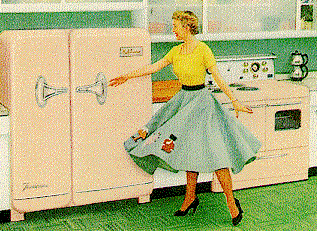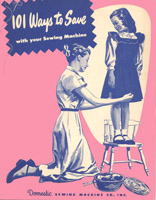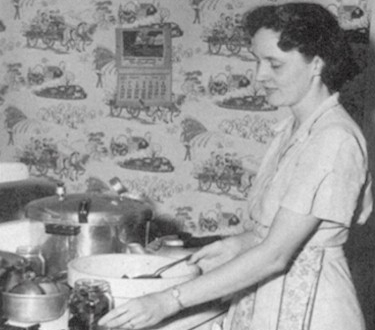Women at Home
What was the real job of
the "stay-at-home" mom?
Many historians have commented throughout time,
women equal
housewives.2 When the men
returned from Europe and the
South Pacific after WWII, the fastest way to go back to the “way things
were.”
Was to recreate this equation, having the women desert their partially
liberating stints in the workforce, and tend to the houses they were
about to
fill with children. Why? Simply because
this was, what women did best. For
hundreds of years it has been understood that, “Roughly speaking, in
most
households the husband is the provider or bread-winner. . .”3
By fulfilling this convenient arrangement and having women take on a
non-virile
role in daily, postwar life, the
balances of customary living were slowly returned.
| 1950's Ideals: What Women Were
Supposed to Know Cooking Terms and What They Mean Can a new wife prepare her husband the meal he expects when he gets home? This instructional video will help her prepare the meals just like his mother used to. Easy Does It How does the "fairer sex" do it? This video shows how new inventions are making it easier for fragile women to do their daily chores. |
 |
Rachel Leslie
History and Film 200
Fall 2004


